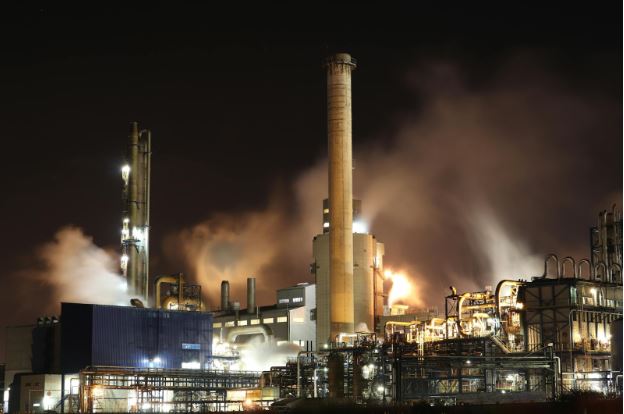In the fight against climate change, real-time carbon demand monitoring has become indispensable for making carbon reduction efforts transparent, effective, and scalable. These advanced technologies allow us to track carbon dioxide removal (CDR) methods accurately, enhancing accountability and operational efficiency. Let’s explore how these innovations are reshaping carbon management and propelling us closer to our climate goals.
Why Effective Carbon Demand Monitoring Matters More than Ever
Global CO2 levels have surged to unprecedented highs, contributing to severe weather events, rising sea levels, and ecological disruptions. Current atmospheric CO2 concentrations exceed 420 parts per million (ppm), up from about 365 ppm in 2002. This spike in carbon emissions, primarily driven by industrial activities, is a major contributor to the escalating climate crisis.
The Paris Agreement aspires to limit global warming to well under 2°C, preferably to 1.5°C, above pre-industrial levels. To achieve this, global carbon emissions must be cut by 45% from 2010 levels by 2030 and reach net zero by 2050. However, current trajectories indicate we are far from meeting these targets, with emissions rising.
Without real-time carbon monitoring, emissions can spiral out of control, exacerbating global warming and making it harder to achieve these critical climate targets. The lack of precise and immediate data hinders effective management and reduction of carbon output. This underscores the urgent need for accurate monitoring tools to address this global predicament.
6 Powerful Advantages of Real-time Carbon Demand Monitoring Tools
Real-time carbon demand monitoring tools offer these distinct benefits that outdated methods simply can’t match:
1. Data-Driven Strategic Planning
Access to real-time data significantly enhances strategic planning in energy and carbon management through artificial intelligence and machine learning (AI and ML). By consolidating data streams into a centralized system, companies can achieve a unified and current view of their energy use and emissions.
Supervised learning models, which utilize labeled data (data with set answers), help predict future energy consumption and carbon emissions based on historical patterns. Satellite monitoring provides additional, comprehensive data on atmospheric conditions and emission levels. The continuous data analysis allows for agile decision-making, aligning operations with sustainability goals.
2. Predictive Maintenance
Real-time carbon demand monitoring tools are crucial for predictive maintenance, which involves identifying potential issues before they become significant problems. This proactive approach uses data from various sensors and monitoring devices to detect early signs of equipment malfunctions or inefficiencies.
For example, unsupervised learning algorithms can identify anomalies in energy consumption patterns that may indicate the beginning of equipment failure. By addressing these issues promptly, companies can diminish downtime, prolong the lifespan of their machinery, and ensure that equipment operates at peak efficiency.
3. Regulatory Compliance and Reporting
With the expanding focus on environmental, social, and governance (ESG) goals, real-time carbon monitoring tools help companies adhere to complex regulatory requirements. These tools streamline the collection, management, and reporting of ESG data, ensuring transparency. They also help companies avoid greenwashing, deceiving consumers about a product’s or service’s environmental benefits through false or exaggerated claims.
Regulatory compliance is crucial for maintaining stakeholder trust and meeting legal obligations as more companies invest in technologies to ramp up their ESG reporting capabilities. For example, IBM’s Envizi ESG Suite helps businesses capture, manage, and report ESG dataefficiently.
4. Integration of Renewable Energy
Real-time carbon monitoring supports the integration of renewable energy sources into industrial operations. By providing precise data on energy consumption and demand, these tools enable businesses to maximize the use of renewable energy, especially during peak tariff periods. This curtails reliance on fossil fuels and lowers energy costs. For instance, microgrids, which are decentralized energy systems, allow localized control over energy sources, reducing transmission losses and improving energy security.
Additionally, utilizing battery storage construction monitors provides real-time data on charge and discharge rates, state of battery health, and capacity. Thus, it enables efficient storage and use of surplus renewable energy, enhancing grid stability.
5. Cost Reduction
Investing in real-time carbon monitoring tools can lead to reductions in business expenditures. For instance, AI-powered emissions monitoring can decrease reporting times, freeing up resources to focus on strategic initiatives to reduce environmental impact.
Real-time data from these tools also supports better energy management, leading to substantial savings on energy bills and improved operational performance. The Carbon Trust highlights that accurate carbon footprinting and data sharing bolster decision-making and sustainability efforts, further contributing to cost efficiency.
6. Enhanced Customer and Stakeholder Satisfaction
Advanced carbon monitoring tools demonstrate a company’s commitment to sustainability, improving reputation, and strengthening relationships with customers and stakeholders. These tools showcase proactive environmental responsibility, which is crucial to consumers, investors, and regulatory bodies. Transparency and accountability build trust and loyalty, driving long-term business success. Real-time monitoring ensures sustainability claims are backed by accurate and timely data, enhancing credibility.
The Bottom Line
Real-time carbon demand monitoring tools are reshaping how we tackle climate change, providing the accuracy and immediacy needed for meaningful impact. These tools offer a granular look at carbon emissions, enabling smarter strategies for reduction and efficiency. Amid increasing CO2 levels, they have become vital instruments in securing a more sustainable and healthier planet for future generations.








Leave a Reply